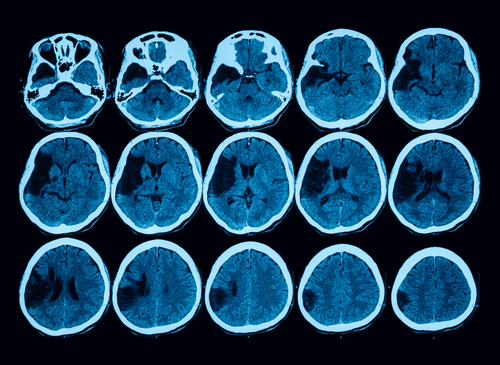Key Points:
- CONNECT-HF, one of the largest heart failure (HF) implementation science trials performed to date, was performed to evaluate how the principles of audit and feedback with personalized feedback by HF and quality improvement experts might impact HF outcomes
- Results showed that this hospital-level intervention did not meaningfully improve clinical outcomes or quality of care delivery at 12 months compared to usual care
- According to the investigators, new approaches are needed to improve care above current quality improvement efforts for patients with HFrEF and next steps include finding alternative QI systems that do improve HF outcomes and rigorously studying those practices
Heart failure with reduced ejection fraction (HFrEF) affects over 3 million patients in the United States. Despite established best practices for optimal HFrEF medical management, termed guideline-directed medical therapy (GDMT), proper implementation of these practices is low which is considered to be a major public health problem. Significant efforts to improve quality of care for patients with HFrEF already takes place nationwide. There is, however, limited data available to inform best practices for hospital and post-discharge quality improvement (QI) initiatives for HFrEF patients outside of controlled studies.

Dr. Adam DeVore MD, MHS, Duke University Medical Center in Durham, NC and colleagues conducted the CONNECT-HF trial, a large-scale, pragmatic, cluster-randomized clinical trial to evaluate the effect of a customized, multifaceted, health system-level QI program compared with usual care on heart failure (HF) outcomes and HF quality-of-care metrics (primary objective). This trial was presented on May 17th, 2021 at the 70th annual ACC Conference as a Late Breaking Clinical Trial.
The CONNECT-HF study (NCT03035474) cluster-randomized 161 hospitals and 5,647 patients in the United States with a 2×2 factorial design. US hospitals with capacity to be randomized to a system-based HF quality improvement intervention who treated >50 patients annually with acute HF underwent 1:1 randomization to intervention or usual care arms. Trial participants included patients hospitalized with acute HFrEF (defined as left ventricular ejection fraction <40%) who were discharged to home. Patients were consented for clinical outcomes, medication use, and participant-centered outcomes, including quality-of-life (QOL) assessments for up to 12 months post-discharge at pre-specified intervals (6 weeks and 3, 6, and 12 months). Patient follow-up took place remotely via centralized telephone interviews by trained personnel via the Duke Clinical Research Institute Call Center.
The hospital and post-discharge intervention arm included audit and feedback on HF clinical process measures and outcomes for HFrEF patients. This was paired with targeted HF and QI education to clinicians and sites. In addition to site visits, clinicians had ongoing mentoring from teams of healthcare professionals with specialized training and field experience in local hospital QI design. In this way, the QI intervention arm utilized QI teams already in place at each of the hospitals in an attempt to improve their established processes. Effects of the interventions were measured through (1) an opportunity-based composite score on quality, as well as (2) time-to-first HF readmission or death among patients with HFrEF who presented to study hospitals with acute HF.
An optional ancillary study included a mobile application and behavioral tools intended to facilitate use of guideline-directed self-management of medications and monitoring for HFrEF patients. Data regarding the utility of this part of the trial was not presented at ACC 2021 and information will be forthcoming.
The CONNECT-HF study found that there was no significant difference at 12 months for the primary outcome which consisted of a composite of HF rehospitalization or death between the intervention and usual care arms (adjusted HR 0.92, 95% CI: 0.81 to 1.05, P=0.21). For the co-primary endpoint of change in an opportunity-based composite score for HF quality (where positive indicates improvement) there was also no significant difference seen between the two groups (change from baseline, -0.97% in usual care vs +2.32 in intervention; double-delta of 3.29, 95% CI: -0.75 to 7.33). Similarly, there was no difference in the odds of achieving a higher opportunity-based HF quality score at last follow-up (adjusted odds ratio 1.06, 95% CI: 0.93 to 1.21, P=0.35).
When asked to discuss the findings, Dr. DeVore commented there were likely several contributing factors to this neutral study. These included the hospital-based nature, desire for high quality reporting, and he noted that “Connecting hospital teams to outpatient clinical care teams is very difficult, even for highly motivated QI programs.” He goes on to say, “This didn’t work which was disappointing but goes back to the really important lesson which is the need to rigorously study QI. We did answer an important question with this study, and we need to find something else that does work [to improve HF outcomes] and study it the same way.” Overall, the study showed that there are low rates of use of GDMT nationwide; therefore, additional studies are absolutely crucial to improve implementation of these well-established HFrEF therapies.
ADDITIONAL RESOURCES:
- CONNECT-HF Trial design paper: https://pubmed.ncbi.nlm.nih.gov/31770656/
- gov website: https://clinicaltrials.gov/ct2/show/NCT03035474




